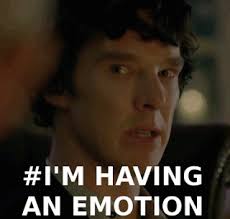Keen, Suzanne. “Introduction: Narrative and the Emotions.” Poetics Today 32:1 (Spring 2011): 1-53. Print
************************
In this introduction to a special two-part Spring 2011 edition of Poetics Today, Suzanne Keen provides a very comprehensive survey of the study of literature and emotion, and how and why we would study literature for its affective effect on readers. This is a huge article and undertaking, but well done in terms of giving the reader an understanding of the criticisms against gauging emotional effect, and arguing for the legitimacy of studying the emotional effect of narrative. Essentially the argument is made that “the feelings generated by the deeds of writers prompt recognition and change in the recipients who experience them” (5).
What makes literature rhetorical? Keen argues that,
[N]arratives have the potential to transmit not just shared values but also disciplinary models of social control (including hierarchies, norms, and discriminating standards) on the societies that share them has been a commonplace of contemporary theory since at least Foucault. (12)
This “affective turn” in studying literature is the premise that “modes of narrative [evoke] emotional responses” (7, 14) and,
“What happens when we scrutinize narrative and the emotions in light of ancient and modern rhetoric, the age-old poetics of impact, empirical evidence of literary response, current cognitive, developmental, and social psychology, or recent neuroscience? (10)
While I cannot condense this entire survey of methodologies and approaches to considering the affective nature of narrative, I will instead provide some analysis of the section that considers how the Chicago School of literary criticism/neo-Aristotelian theory figure into studying the affective nature of fictional literature, and particularly how applying rhetorical methodologies can assist scholars in teasing out what elements of fictional narrative illustrates effective communication with the reader. Keen only devotes a small area to considering rhetorical critical theory, but does note that “[Wayne C.] Booth reintroduces the concerns of rhetoric into narrative studies, showing the way to both rhetorical narratologists…as an aspect of response and an elicitor of ethical engagement” (35-6). This particular theory intends to suss out the relationship between the author and the reader, and in doing, consider how the narrative structure, language, genre expectations, and more will affect the audience’s “intellect, psyche, emotions, and values” (36). As part of the larger two-part special topics edition of Poetics Today devoted to the topic of narratives and emotion, this introduction provides a grounding in considering specific texts through these lenses, such as “origin stories of Genesis to shared cultural narratives, from canonical novels to private letters to film comedies and jokes” (40). When considering whether issues around periodicity or specialization are limiting scholars in their scope of understanding genres of literature, this approach is more concerned with multi-textual examinations that consider emotion and affect from the Romantics to the Victorians, from the postmodernists to the contemporary.
************************


